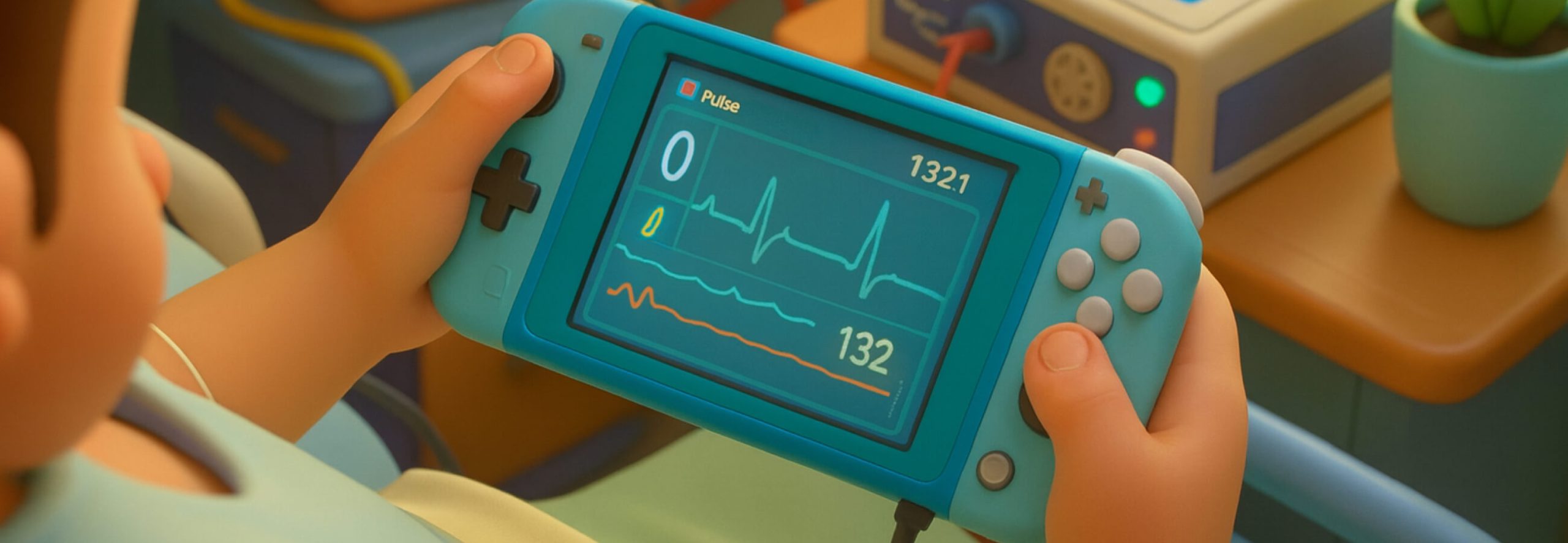

The internet constitutes a worldwide network of interconnected computers, facilitating global information sharing and communication among people across the globe. The web or World Wide Web is one of the most popular and widely used application on the internet. It consists of webpages that are linked by hypertext links and can be accessed using a web browser.
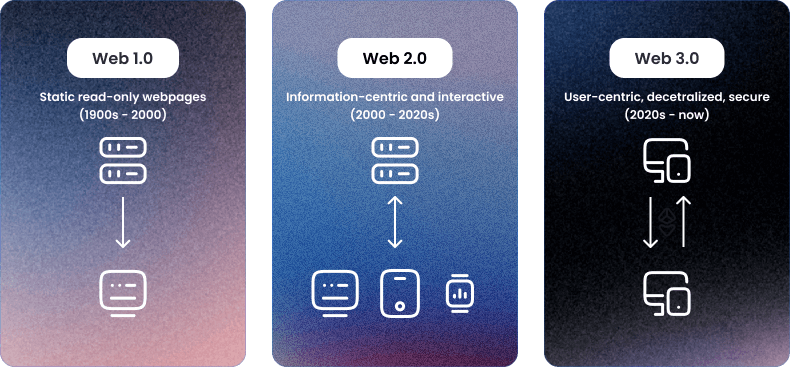
The web has changed dramatically since its early days back in the late 1980s. In this article, we will explore the evolution of web from its early inception to where it is today, learn what is a Web 1.0, and take a look at some of the emerging trends and technologies that are shaping the future of the web.
Web 1.0 – The Static Web
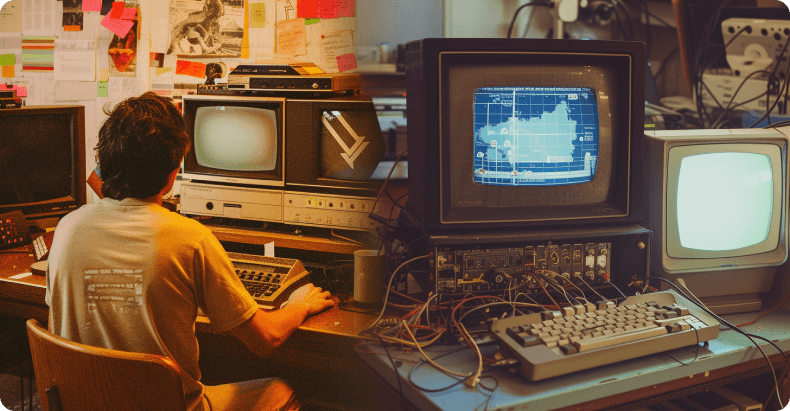
The first generation of the web lasted from the early 1990s to the early 2000s. It was characterized by read-only content which were typically updated infrequently and were little more than electronic versions of the pages that has been used in print publications for the past few hundred years, and very limited multimedia content. The first generation was mainly a platform for information dissemination rather than for information creation and collaboration.
The first generation of the web was a major turning point in the history of the internet and set the stage for the digital revolution in the dissemination of information that followed. The first generation of the web stretched from the dawn of the internet in the early 1990s until the early 2000s. During this time, the web was largely replete with static HTML pages that served primarily read-only content with little to no user interaction, and even more limited multimedia content.
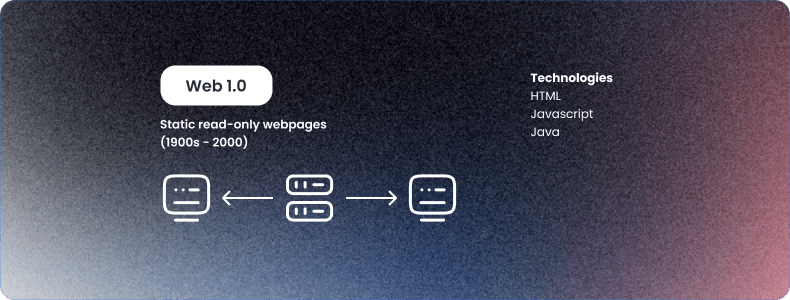
So, what is Web 1.0 and what it’s key milestones? This initial stage saw the dawn of revolutionary web browsers including Mosaic and Netscape which dramatically altered the user experience while laying the groundwork for their future structural developments. Meanwhile, the W3C was instrumental in formulating HTML standards — a universally common language which allowed information to flow with virtually no limitations across multiple platforms.
One of the stand-out characteristics of the initial generation was that it featured only limited multimedia as the lack of bandwidth and technological constraints at the time prevented standard multimedia support. As a result, most websites provided static text and images which largely made for a rudimentary online experience that was incomparable to dynamic and interactive nature of the web today.
Meanwhile, the gentrified web was also about to get a good virtual mugging, and the spectacle was broadcast on primetime. The 90s saw the inception of the search engine, with the likes of Yahoo and the then-whippersnapper, Google. Web evolution has transformed user behavior quite as much as the ability to immediately call up the world’s information on a whim, and the ability to search and discover relevant pages, repositioned the web as a stacked repository of human knowledge unlike any other. The first generation became something much easier to use in the 90s, and web consumption turned to web participation. Web 1.0 established the beachhead on which the populist web would breed and converge in mist afterwards.
Web 2.0 – The Social Web

The mid-2000s saw the onset of the second wave of the web, which persisted until the late 2010s. It allowed users to not only consume, but also create and share content on the web, such as blogs, wikis, podcasts, videos, and social media. It also introduced new techs and features that enhanced the UX and functionality of the web. Web 2.0 technologies included RIA, AJAX, RSS feeds, and web APIs.
Some of the key developments of the second generation were the rise of social networks that connected users and allowed them to communicate and express themselves online, the emergence of the blogosphere and wikis, such as Wikipedia, that enabled users to contribute and edit content on various topics, and the advent of cloud computing and mobile web, that allowed people to store data and services on the web, rather than on their own devices.
Moving forward, the second generation of the net was a monumental period that revolutionized the digital world from the mid-2000s into the late 2010s. It saw a radical shift toward interactivity and collaboration, marking a time when the web ceased being a static information source and became a platform for active involvement and social interaction.
The Web 2.0 meaning is often linked to the emergence of platforms that empower users to generate and distribute content on the internet. At the heart of the second generation was the empowerment of users to move beyond mere consumption, encouraging them to actively generate and distribute content across various online mediums. This era witnessed the proliferation of user-generated platforms, including blogs, wikis, podcasts, videos, and the explosion of social media networks. Individuals were no longer passive recipients of information but became active contributors, shaping the digital landscape with their thoughts, ideas, and creative expressions.
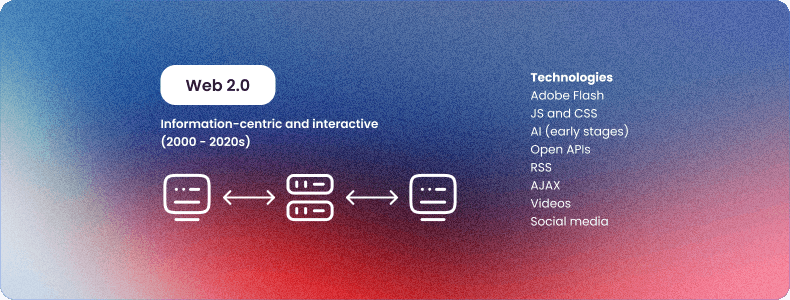
When you consider the Web 2.0 definition, it’s easy to think of many platforms that let people create and share content. The core of this era, however, was about more than simply giving users the ability to do more than consume. Instead, it was about inviting people to create and share content themselves across a wide range of online formats. It was defined by oceans of user-generated blogs, wikis, podcasts, videos and an explosion of social networking services. People weren’t just recipients of information, they said — they were participants who gave voice to their thoughts, ideas and creative creations.
The second generation saw the implementation of technological developments that dramatically improved the overall user experience and functionality of the net. RIAs, AJAX, RSS feeds and web APIs were created, allowing for increased connectivity and a more fluid and interactive online experience overall. These technologies led to web pages that could respond dynamically to users’ input, so that the interface was much more engaging and user-friendly.
The appearance of social networks was significant in this part of the Web 2.0 narrative, which were places where users could not only connect with people globally, but also communicate, share experiences and express themselves online. The rise of the blogosphere and wikis (like Wikipedia) allowed users to create and edit content in a collaborative way, democratizing the way knowledge was spread in a way that hadn’t been possible before.

So, what is Web 2.0 and how it converted the net from a passive to an active medium? To answer this we need to look at the rise of several transformative technologies, notable among them cloud computing and the mobile net, which let users access and store data and services from anywhere, turning the web from a tangle of individual devices and cables into one giant computer. The second generation was also about social media sites which let users collaborate, and man started delivering their own content via blogs, podcasts and video. Behind it all was the idea that the web was its own reward, the turn away from dot-com-bust-era models where you lured people to your great content and online store, that you probably couldn’t afford to run, with cat videos and Vines.
In short, the second generation was the name for a sea change in the internet’s purpose and function. It turned it from a web into a true cloud, a dynamic and participatory platform whose content is always run from users’ own devices and always changing thanks to collaboration and cooperation. It let the web evolve, which is how we got to the third generation and beyond.
Web 3.0 – The Decentralization of Web

Many people are curious about Web 3.0 meaning and its potential to transform the internet as we currently understand it. The third generation of the web is beginning to take shape and is set to alter the future of the web. It embraces: The semantic web and AI. Enhanced security, privacy, and support for users’ data rights. And the decentralization of the web and of data storage. This has given rise to the third generation, a grand, all-encompassing term for the next generation of the net.
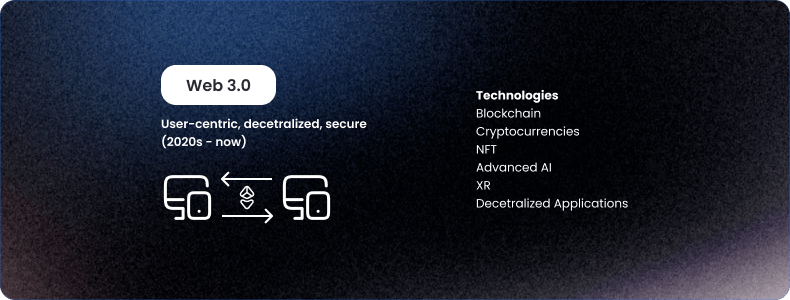
A Web 3.0 definition is not easy to give, as it encompasses diverse elements of the upcoming era, such as semantic web, AI, and P2P networks. Distribution is at the heart of the new net, while distributed ledger technology is a foundational piece. It is a model that is at odds with traditional centralization, and one that aims to move us toward a more democratic, transparent digital ecosystem. An essential piece of the third-generation puzzle is self-executing contracts. These enable the execution and enforcement of agreements without the participation of intermediaries. These days, they rely on distributed ledger technology (though they will likely also soon feature peer-to-peer networks). This is a foundation for the uncoordinated brand of the third generation – a system in which distributed programs can run without the intermediation of central authority. As a result, the third generation will allow for the growth of so-called DeFi, enabling anonymous users to conduct financial activities securely and without the use of intermediaries. It’s a trend that promises to deliver more equitable, efficient finance, and to which we now turn.
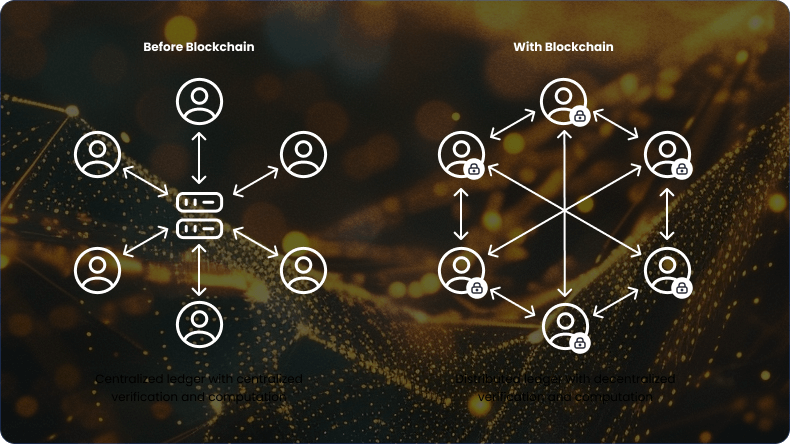
The Third Generation aims to create a more open, intelligent and trustworthy web in which users have more control of their data and in which the web can respond to user preferences. Potential impacts and directional strategies of The Third Generation include the development of smart contracts and DeFi that allow users to execute and verify transactions without intermediaries; the creation of non-fungible tokens (NFTs) and digital ownership that allow users to own and trade unique digital assets, such as art, music and collectibles; and the role of virtual reality (VR) and augmented reality (AR) in which users can experience and interact with immersive, lifelike digital environments.
Many people are curious about what is Web 3.0 and what benefits it can offer to users and developers. The third generation of the web, still in its infancy, is the next paradigm shift that looks to redefine the digital landscape. Unlike its predecessors, several key pillars broadly define the third generation: Decentralization and distributed ledger technology, Semantic web and AI, and an increased focus on keeping control of our data and embracing privacy and security. This transformation aims to create a more open, intelligent and trustworthy net — one that gives users elite control and ownership over both data and transactions.
The semantic web and AI are integral components of Web 3.0 technologies, contributing to a more intelligent and responsive online environment. By enhancing the web’s ability to understand user needs and preferences, these technologies facilitate a personalized and adaptive digital experience. This evolution aims to move beyond keyword-based searches, enabling the web to comprehend context and deliver more relevant and tailored information to users.
Crucial to the third generation, the semantic web and AI adds intelligence and responsiveness to our online surroundings. These technologies allow the web to understand our likes, dislikes, needs and preferences; this makes the digital experience more personal and adaptive. Through this evolution, the web looks to progress past keyword-based searches. The web of tomorrow will be able understand context—delivering more appropriate and tailored information to users.
Third-generation capabilities elevate privacy and security to new heights. More control over data means less potential threat from centralized storage of such data, aided by more sophisticated encryption and more decentralized identity solutions that prevent the kind of large-scale data breaches and unauthorized access that plagued the earlier generations. The concept of digital ownership is introduced (critically important for artists and others). For more on how Web3 software development is reshaping digital services, check out this detailed article on the topic.
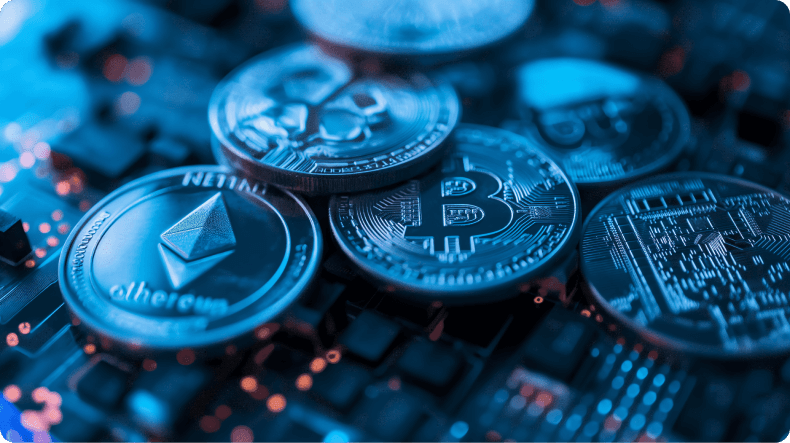
You will hear much about non-fungible tokens (NFTs) that let users own and trade unique digital assets such as art, music and collectibles, as well as prove their authenticity in the digital world. This radically changes the dynamics of digital ownership and the capacity for creators to make their digital creations lucrative. Virtual reality (VR) and augmented reality (AR), of course, have fully come of age. So, more than ever, have the thoroughly immersive and realistic experiences that they offer, experiences that make digital “reality” almost inseparable from actual reality.
These in turn promise to revolutionize entertainment, education and most importantly, new ways of doing commerce and engaging socially. At its very essence, this third generation represents a paradigm shift that is aimed at fostering a more decentralized, intelligent and user-centric web experience. As it matures, the full impact of smart contracts, DeFi, digital ownership through NFTs, VR and AR immersive experiences and much more will undoubtedly transform the way we interact with and perceive the digital realm, creating a more inclusive, secure and innovative web landscape.
Conclusion
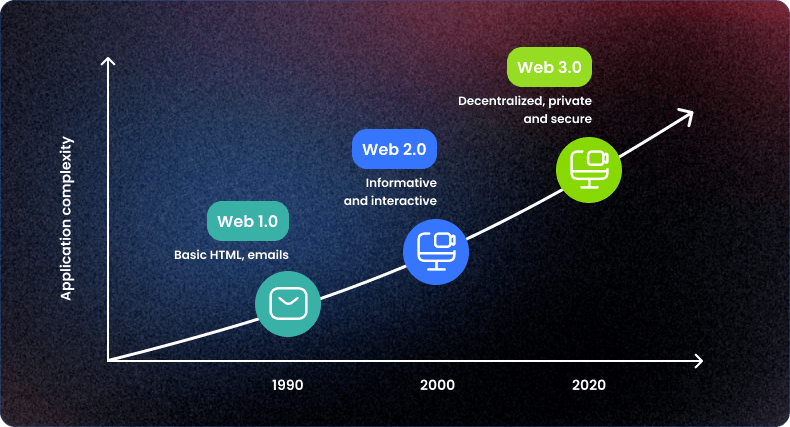
In summary, the web has evolved from a static and passive platform for information consumption, to a dynamic and interactive platform for information creation and collaboration, to a decentralized and intelligent platform for information ownership and exchange. The web has had a dramatic impact on society and technology and will continue to transform in the direction of a more efficient, trusted and cooperative system.
Taking into account what is written above, we at Fgfactory, a leading game development company in Australia, are here to assist with creating innovative Web 2 and Web 3 gaming solutions that push the boundaries of what’s possible in the digital gaming landscape.
SUMMARIZE THIS PAGE
Contact us





